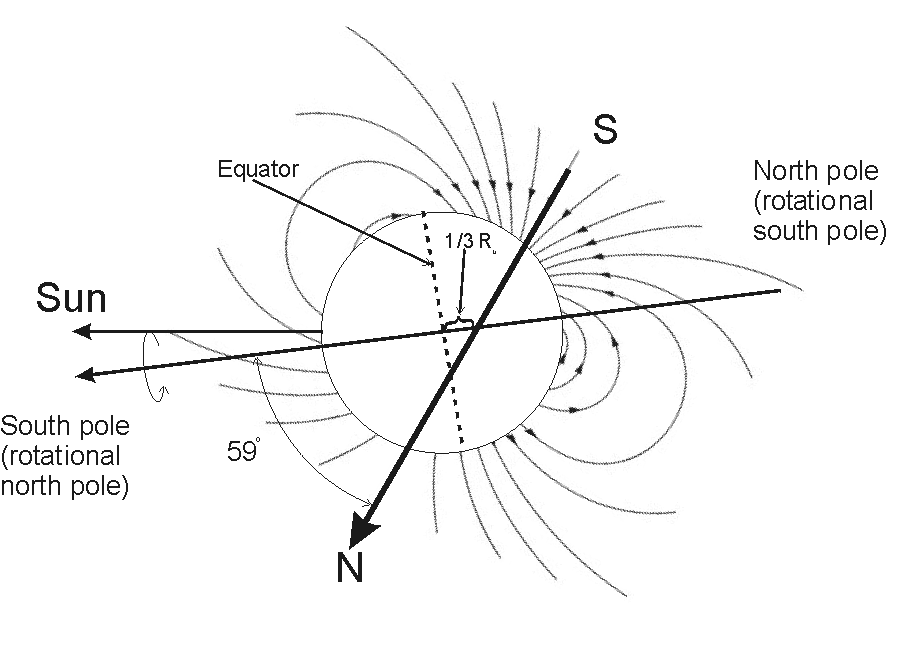https://en.wikipedia.org/wiki/Uranus#Magnetosphere wrote:
<<Before the arrival of Voyager 2, no measurements of the Uranian magnetosphere had been taken, so its nature remained a mystery. Before 1986, scientists had expected the magnetic field of Uranus to be in line with the solar wind, because it would then align with Uranus's poles that lie in the ecliptic.
Voyager's observations revealed that Uranus's magnetic field is peculiar, both because it does not originate from its geometric centre, and because it is tilted at 59° from the axis of rotation. In fact the magnetic dipole is shifted from the Uranus's centre towards the south rotational pole by as much as one third of the planetary radius. This unusual geometry results in a highly asymmetric magnetosphere, where the magnetic field strength on the surface in the southern hemisphere can be as low as 0.1 gauss, whereas in the northern hemisphere it can be as high as 1.1 gauss. Studies of Voyager 2 data in 2017 suggest that this asymmetry causes Uranus's magnetosphere to connect with the solar wind once a Uranian day, opening the planet to the Sun's particles. In comparison, the magnetic field of Earth is roughly as strong at either pole, and its "magnetic equator" is roughly parallel with its geographical equator. The dipole moment of Uranus is 50 times that of Earth. Neptune has a similarly displaced and tilted magnetic field, suggesting that this may be a common feature of ice giants. One hypothesis is that, unlike the magnetic fields of the terrestrial and gas giants, which are generated within their cores, the ice giants' magnetic fields are generated by motion at relatively shallow depths, for instance, in the water–ammonia ocean. Another possible explanation for the magnetosphere's alignment is that there are oceans of liquid diamond in Uranus's interior that would deter the magnetic field.
Despite its curious alignment, in other respects the Uranian magnetosphere is like those of other planets: it has a bow shock at about 23 Uranian radii ahead of it, a magnetopause at 18 Uranian radii, a fully developed magnetotail, and radiation belts. Overall, the structure of Uranus's magnetosphere is different from Jupiter's and more similar to Saturn's. Uranus's magnetotail trails behind it into space for millions of kilometres and is twisted by its sideways rotation into a long corkscrew.
Uranus's magnetosphere contains charged particles: mainly protons and electrons, with a small amount of H2+ ions. No heavier ions have been detected. Many of these particles probably derive from the thermosphere. The ion and electron energies can be as high as 4 and 1.2 MeV, respectively. The density of low-energy (below 1 keV) ions in the inner magnetosphere is about 2 cm
−3. The particle population is strongly affected by the Uranian moons, which sweep through the magnetosphere, leaving noticeable gaps. The particle flux is high enough to cause darkening or space weathering of their surfaces on an astronomically rapid timescale of 100,000 years. This may be the cause of the uniformly dark colouration of the Uranian satellites and rings.>>
 Aurora around Saturn's North Pole
Aurora around Saturn's North Pole

